Sharlyn J. Lauby's Blog, page 88
December 17, 2019
Get Ready for Changes To the Fair Labor Standards Act (FLSA)
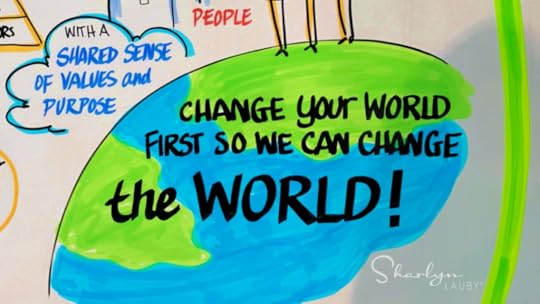
(Editor’s Note: Today’s post is brought to you
by our friends at the
Society
for Human Resource Management (SHRM)
. With
over 300,000 HR and business executive members, SHRM creates better workplaces
where employers and employees thrive together.
Don’t
miss out on SHRM’s new People Analytics Conference on January 14-15, 2020 in
Seattle.
HR Bartender readers can get a 50%
discount with the code PA20SHARLYN. Enjoy the article!)
Over the past few months, we’ve
talked about the upcoming changes to the Fair Labor Standards Act (FLSA). You’ve probably already seen them, but just
in case, here are a couple of those articles for your reference:
Legislative
Update: New FLSA Overtime Changes Proposed
New
FLSA Changes 2019 – – What You Need to Know
But that’s not really the purpose
of today’s post. We’re less than 30 days out from the new FLSA changes going
into effect. If your organization hasn’t put together an implementation plan,
now’s the time. The first step toward putting together a good plan is finding
reliable sources of information. I’d like to think you consider HR Bartender a
reliable source (and I thank you).
Another reliable source is SHRM. As a member,
we have access to several resources that can help us stay informed. In the case
of this upcoming FLSA change, SHRM
has put together a resource guide including forms, seminars, and a toolkit.
A couple of weeks ago, SHRM’s Knowledge Advisors hosted an online chat about
the changes. While the live chat has passed, if you want to view the archive, you
can access it via the event page.
Assess Your Organization’s Readiness for Change
In addition to being equipped
with good information when developing your implementation plan, it’s important
to know where your organization currently stands. Are you in compliance? And if
we’re not, what does it take to become compliant? So, the next logical step is
to conduct an organizational readiness assessment.
As one HR pro to another, we know
that when changes in the law happen, there are times when we can easily bring
the organization into compliance. And then there are moments when changes in
the law take a lot of conversations and convincing to bring the organization
into the compliance.
Wouldn’t it be great to have a
tool that provided a risk assessment? You know, something that gave you an
indicator of the company’s current level of compliance and if necessary, what
it would take to bring the organization to full compliance. Well, I recently
discovered that SHRM has a tool like that for the FLSA. The tool allows HR to
understand FLSA risk by individual job profiles in addition to an overall
organizational risk score.
1. ORGANIZATIONAL RISK AUDIT: The FLSA audit tool allows HR to answer some high-level questions about the executive, administrative, professional, and outside sales exemptions. And don’t worry if you don’t remember the specific legal definitions of these terms. The software has the definitions available. The organizational audit will also ask how the company handles on-call employees, breaks, training, and travel time.
After
entering the information, the final report can be customized with your company
logo. It will provide an overall risk rating as well as individual ratings for
each area. HR can then use the report to conduct audits of individual job
profiles.
2. JOB PROFILE AUDIT: The job profile audit is like the organizational one in that it takes you through a series of questions about the job. At this level, HR can add a department and even an employee’s name to the job profile audit.
Let’s
say you have a job title that’s held by two different people in two different
departments (i.e. administrative assistant). But their responsibilities are a
little different. You want to make sure that both positions are compliant. This
tool would allow you to do that. Same could be true of multiple people holding
the same title in the same department. For example, the sales department might
have multiple people with the title account manager. The final report will
provide you with your answers as well as the determination about whether the
job profile qualifies under one of the FLSA’s exemptions.
I could see SHRM’s FLSA Audit
Tool being a part of a company’s readiness assessment and preparations for the
upcoming changes to the FLSA. But I also asked SHRM a couple of questions about
using the audit tool after the FLSA changes go into effect.
On the organizational front, HR
professionals could use the software to run regular compliance audits. HR could
monitor the company’s progress and share it with the senior management team. For
the job profiles piece, it’s not possible to change a job classification BUT it
is possible to have multiple classifications under the same title. For example,
in the administrative assistant or account manager examples above, the
organization could decide to have different classifications within the same
title (i.e. senior account manager or administrative assistant II).
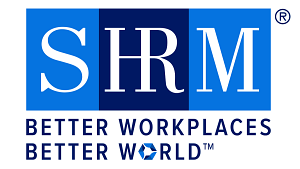
Wage and Hour FLSA Issues are Business Priorities
According
to SHRM research, the top employment-related lawsuits are in the areas of
workplace discrimination, employee benefits, and wage
and hour claims. While the threat of lawsuits
shouldn’t be our primary motivator for complying with the law, part of our
responsibility as HR professionals is to manage risk. And to do the right thing
by paying employees according to the law.
The
FLSA Audit Tool can allow us to manage organizational risk. It can be done
quickly, efficiently, and cost effectively. This allows HR to spend time on
things that software can’t do – like recruiting, engaging, and retaining the
best talent. For more information about SHRM’s FLSA Audit Tool, check out the demo on the
SHRMStore website.
The post Get Ready for Changes To the Fair Labor Standards Act (FLSA) appeared first on hr bartender.






December 15, 2019
Employee Engagement Creates Engaging Customer Service
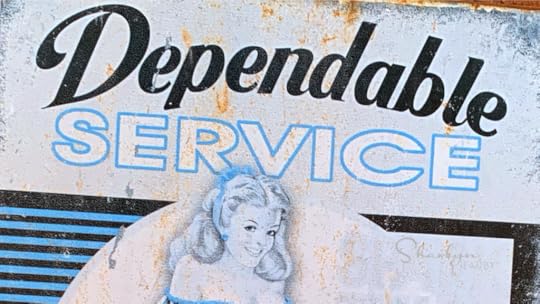
I ran across an old article in Harvard
Business Review titled “Reinventing
Customer Service: How T-Mobile Achieved Record Levels of Quality and
Productivity”. Every organization needs to deliver a
certain level of customer service. You don’t have to be T-Mobile to be
concerned about making customers happy. And as the title of today’s article
says, it takes creating engagement in order to make that happen.
Back to the T-Mobile case study. There were
five big takeaways for me in reading the HBR article. And it made me wonder if,
when we’re talking about employee engagement strategies, should we consider
customer service?
Changing the way employees deliver customer service involves a change in culture. I really wish the T-Mobile case study would have spent more time on this aspect. Toward the end of the article, they quoted a senior executive discussing the need to check cultural readiness because it has an impact on future decision making where customers and customer service are concerned.Reach consensus on the metrics that will be used to measure success. One of the key metrics that T-Mobile uses is Net Promoter Score (NPS). It’s a measurement that tells the organization how they’re doing in terms of customers feeling comfortable recommending them to others. Your organization might want to use the same metric OR maybe something else. The important part is that everyone needs to be all in with the way customer service will be measured.Create a work environment that allows employees to deliver excellent customer service. I’m talking about both physical office space as well as policies and procedures. Employees that are uptight and stressed out aren’t going to deliver good customer service. And anyone who has been given the run-around as a customer knows that it takes empowering employees and strong employee engagement to solve problems and offer solutions to make customers happy. Reward employees for excellent customer service. When employees do something great, let them know. When their quick thinking saves an account, thank them. If an employee figures out how to delight customers without spending a lot of money, reward them. That helps grow employee engagement. Organizations should set customer service performance expectations, monitor employee behaviors, provide feedback, and coach when necessary.Review the customer service aspect of the company’s hiring requirements. You might be thinking “Why not do this first?” I know I was as I was reading the article. But T-Mobile chose to address their current situation (and current employees) then talked about what to do moving forward. This goes back to #1 about changes in culture. Organizations should change the culture then address what it means for future hires.
A clear benefit of an engaged workforce is better customer service. But in order to create employee engagement, organizations need to examine their current customer service standards, policies, procedures, and metrics. To me, that’s the point of the T-Mobile case study. We can’t simply change one (i.e. engagement) and hope that other (i.e. customer service) just happens. To be effective, it’s a coordinated effort.
Image captured by Sharlyn Lauby while exploring Disneyland in Anaheim, CA
The post Employee Engagement Creates Engaging Customer Service appeared first on hr bartender.






December 13, 2019
Employee Engagement Starts With You
(Editor’s Note: Today’s article is brought to you
by
our friends at Kronos
,
a leading provider of workforce management and human capital management cloud
solutions. The Workforce Institute at Kronos has a new book out, “
Being
Present: A Practical Guide for Transforming the Employee Experience of Your
Frontline Workforce
”. Learn how you can get a free copy in today’s
article!)
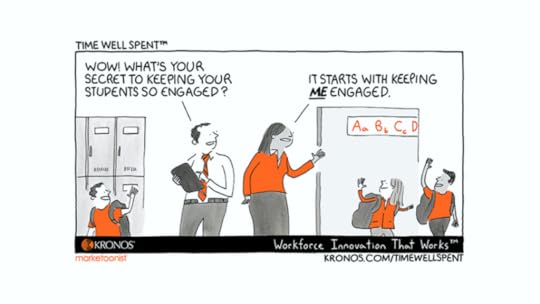
I loved today’s Time
Well Spent from our friends at Kronos.
Many times, the cartoon is a nice pun or poking fun at the workplace. Today’s
is different, but there’s no funny. The teacher is great with her students
because she’s engaged in her work.
It reminded me that employee engagement rests with the person.
And that an engaged employee can pass along their enthusiasm to others.
Employees need to be a part of the engagement solution. Many companies are looking for the secret to unlocking employee engagement. Because they know that engaged employees are good for business and the bottom-line. A huge piece of the solution is letting employees be themselves at work. We can’t force engagement. We can’t say, “By gosh, get engaged or else.” It doesn’t work that way.
Managers need to practice what they preach. If a manager wants an engaged workforce, the first question they should ask themselves is “Am I engaged?”. Employees know when their manager isn’t engaged. You can’t fake it. Managers that aren’t engaged should do some exploring to find out what it takes to become engaged.
Organizations need to create workplaces that allow employees to own their engagement. Adding to the last paragraph, employee engagement isn’t just an entry-level employee thing. It needs to happen at every level of the organization. If every level of the organization was focused on allowing employees to be themselves, think about how inclusive and innovative the organization could be. But it takes a total organizational effort.
Employee engagement isn’t an organizational mandate. Employees
will be engaged when they feel like they can be themselves at work (without
retribution and disrespect). The way that happens is when managers and senior
leaders feel like they’re engaged. Not just doing the job and delivering
results. But when they truly feel engaged with their work.
The post Employee Engagement Starts With You appeared first on hr bartender.






December 10, 2019
Future of Work: How Organizations Can Support Career Lattices

I ran across this quote from the most recent HR Technology
Conference and Expo:
“Careers in the Future of Work: The old career model is over. Goodbye career ladder. Hello career lattice.”
Like the “generalist versus specialist” debate, there’s no need to argue about career ladder versus lattice. Both career ladders and lattices have always existed. Neither are new. And they are both important. Employees need to have flexibility in order to achieve their career goals. That’s where these options come in.
Career ladders have always been
viewed as “moving up” in the organization. Career lattices also involve moving
up, but sometimes they involve a lateral move. Or maybe moving downward on the
organizational chart so, at a later point in time, there’s a straight path up. Both
focus on helping employees achieve their career goals.
We also can’t make the
assumption that career lattices take longer than career ladders. On the
surface, it would seem plausible that while making a lateral move within a
career lattice does give the employee new skills and experiences that it would
also make the process longer. But then again, it’s possible that promotional
opportunities on a traditional career ladder can get bogged down by company
politics making that process longer as well.
In thinking about these options, I’m not sure that’s where the change needs to happen. Both do the same thing by helping an employee achieve their career goals. One isn’t necessarily faster than another. Why do employees have to be restricted to one type of career model? Employees might be focused on career lattices during their early career, then shift to a career ladder at mid-career. Maybe then back to a career lattice later in their career.
When it comes to career
ladders and career lattices, what needs to change is on the company side. Organizations
need to do a better job of defining career ladders and lattices in their career
management strategies. Managers – both inside and outside of HR – should be
trained on how to have career ladder and lattice conversations with employees.
And most importantly, organizations should support employees regardless of
whether they’re choosing the ladder or the lattice. Here are three specific
actions that organizations can consider:
Identify the “career ladder” and “career lattice” move for each position. Many organizations already know the career ladder next move for job positions in their organization. The question is “Are there some ideal career lattice next moves?” Maybe it’s not just one, but there could be several. Re-examine learning and development opportunities. Often organizations have pre-defined requirements for employees to participate in development programs. That’s great for career ladder programs. To support a career lattice, maybe those requirements need to be adjusted. Re-evaluate compensation. Again, many organizations have a compensation structure in place for employees who are moving up using the traditional career ladder. But what about career lattice? Employees are taking the lateral move to advance their career and that benefits the company in the long run.
There’s absolutely nothing wrong with the traditional career ladder. But that doesn’t mean we can’t have another option with the career lattice. For employees to use it successfully, the company needs to define it well, support both models, and give employees choices. That’s how we create careers that employees want in the future workplace.
Image capture by Sharlyn Lauby while exploring EPCOT Center at Walt Disney World
The post Future of Work: How Organizations Can Support Career Lattices appeared first on hr bartender.






December 8, 2019
Professional Networking Today: Think On and Offline
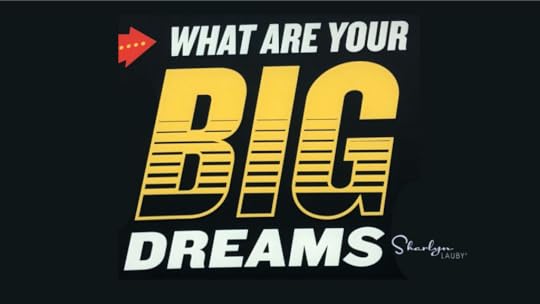
Building a professional network is important. We use our
professional network for information, support, and sometimes assistance. It
takes a long time to build a network and forever to maintain relationships.
But building a professional network today isn’t the same as
it was a decade ago. Because now we have to think about building and
maintaining two networks: 1) an online network and 2) an offline one. That was
one of my big takeaways from William Arruda’s book “Digital
You: Real Personal Branding in the Virtual Age”.
I know some people might see the term “personal branding” in
the book title and say to themselves “Oh, the concept of personal branding is dead.
Good riddance.” Well, Arruda addresses that subject at the very beginning of
his book. One of the statistics that he quotes talks about employees having an
average of 10 times more social connections than a brand and brand messages
reaching 561 percent farther when shared by employees. Your employees know they
have this ability and they will work to develop a digital brand. It gives them
control over the way they work.
Back to networking. While the chapter in “Digital You” about assessing your current on- and offline networks isn’t very long, it really got me thinking. I’m not sure we can develop an online professional network the same way that we develop our offline one. Here are a few things to consider:
We live in a very digital world. When we meet someone for the first time, what do we do? That’s right. We Google them to make sure they’re legit. We try to find out about their background. And we check out their LinkedIn profile. (I’m not talking about interviewing candidates here. That’s a different story.) My point is the internet has changed the way we meet people. So, we need to have an online brand as well as our personal presence.
We need to have both an online and offline network. While “Digital You” obviously is focused on the online network, it doesn’t dismiss the need for an offline one. The purpose of having a personal brand isn’t to choose between the two. It’s to develop and maintain both the online and offline networks well. This is where I would toss out some tough love. Networking is hard. Think about all the times we say to ourselves that we can network “later”. Having a successful personal brand means making time for more networking.
Our online network isn’t more important than our offline one. And vice versa. Both our online and offline networks bring different value. I can see accessibility being a benefit of an online network. It’s easier to access people using technology. An online network could also allow us to build a global network. On the other hand, we get the benefit of non-verbal communication with our offline network. We can also benefit from the change of scenery we might interact with our offline network – conferences, coffee shops, etc.
Our online network is more than a friend, follower, or connection count. Don’t get me wrong. Friends, followers, and connections are important, but chances are you’re not regularly engaging with all of them. Maybe you’re connected through a mutual online group. For starters, think of your online network as the group of people who will answer a DM, PM, or in-mail from you. They know who you are and will engage with you.
“Digital You” reminded me that as much as we use technology and social media, it’s changing and evolving all the time. The way we used it five years ago isn’t the way we use it today. And it won’t be the way we use it in the years ahead. That includes how we manage our personal brand and how we build our professional networks.
Image capture by Sharlyn Lauby while exploring the streets of Orlando, FL
The post Professional Networking Today: Think On and Offline appeared first on hr bartender.






December 6, 2019
Make Onboarding Interesting and Fun
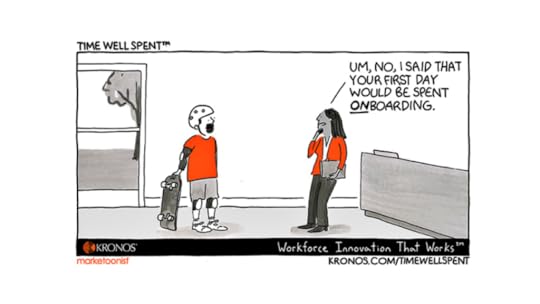
You know that onboarding holds a special place
in my heart. I facilitate the Society for Human Resource Management (SHRM)
seminar on Talent
Acquisition: Creating Your Organization’s Strategy.
During the seminar, we talk about onboarding success strategies. And I wrote
the book on “Manager
Onboarding: 5 Steps for Setting New Leaders Up for Success”
where we talk about how to design an onboarding program specifically for
managers and supervisors.
In both, we discuss the importance of infusing
a bit of fun into the process. Today’s Time Well Spent
from our friends at
Kronos made me smile because it reminded me about
those conversations. Learning doesn’t have to be stuffy or boring. In fact,
finding ways to make learning more engaging and interesting is part of our
responsibility as HR and learning professionals.
Games can be a valuable learning tool. I don’t hear the term gamification as much as I used to, but that doesn’t mean the value of games in training and learning has diminished. I’m amazed at the business lessons I’ve found playing Pokémon GO or going to an Escape Room. A scavenger hunt is a great (and fun!) activity to incorporate into orientation.
A field trip is both interesting and more relevant than pictures. I know that sometimes we have to use visual aids like videos and pictures to explain something. I’m sure none of us wants to deal with field trip logistics. But let’s be real, it’s so much more effective taking employees to the actual location or showing them the actual product. And field trips can be fun. It’s an opportunity to create interaction and connection.
Mixing up learning mediums can make onboarding interesting. There’s no rule that says orientation and onboarding must be held in a classroom or meeting room setting. By a single person in HR. Sure, do some activities in the classroom. Do some team teaching. Conduct a webinar. Create a new hire podcast series. Design a buddy program. Learning can happen in a variety of ways. Take advantage of all of them.
Orientation and onboarding are the
organization’s opportunity to make a first impression. They tell new hires that
they made the right decision coming to work there. They let the employee know that
all the things they heard and all the promises that were made are really going
to happen. Those are exciting things worth celebrating. Why not make that first
impression enjoyable, interesting, and a little fun?
The post Make Onboarding Interesting and Fun appeared first on hr bartender.






December 3, 2019
Pre-Employment Assessments: Why Organizations Should Measure Effectiveness

(Editor’s Note: Today’s article
is brought to you by our friends at
Criteria Corp, a leading provider of pre-employment
testing services. If you want to learn more about how
pre-employment testing can benefit your recruiting strategy, check out
Criteria Corp’s “Definitive
Guide to Pre-Employment Testing”. I found this
to be a comprehensive guide that I keep on the corner of my desk all the time.
Enjoy the article!)
Readers of this blog know I’m a believer
in evaluation and measurement. Whenever we create something – it could be a process,
program, policy, etc. – we need to measure it. Otherwise, how do we know if
it’s doing what we expected and what we need? In addition, how do we know where
to focus future revisions and updates?
Recruiting is a great example.
It’s probably one of the most measurement friendly functions in human
resources. We measure recruiting sources to determine if they’re effective. A
couple of questions that measuring sourcing effectiveness can tell us include:
Did the job posting attract enough applicant flow?
Did it attract candidates who were qualified?
Another
recruiting related measurement is the company’s employment brand and candidate
experience. We can measure the amount of time that individuals spend on our
career site and what pages they spend the most time on. This can tell us if
individuals are visiting the site to learn about the company or search for open
positions. We can also track how long it takes for job seekers to apply as well
as our applicant drop off rates.
You
see the point of this example. Organizations can measure activities during the recruiting
process to make sure those activities are working the way they’re supposed to.
The way that the organization designed them to work.
Pre-Employment Assessments: 3 Levels of
Measurement
One more activity in the hiring process that organizations should measure is the use of pre-employment assessments. If you’re not familiar with pre-employment assessments, check out Criteria Corp’s “Definitive Guide to Pre-Employment Testing”. And I’m not making this suggestion to be glib. To be effective, pre-employment assessments have to be used the right way.
For example,
a true pre-employment assessment goes through an evaluation before we ever
start using them. That’s the process of validation. A valid assessment means
that the instrument measures what it’s supposed to measure. For example, a
cognitive ability test measures a person’s ability to learn (i.e. trainability). The second component to validation is
reliability. This means that the test results will be relatively consistent. A
person who takes the test twice should see generally the same results.
Organizations that use valid assessments can feel confident in the results they
receive.
But there’s a
third aspect to validation. Pre-employment assessments should be validated
specifically for the function that they support. For instance, when it comes to
recruitment, the assessment should be validated for recruiting and selection. I’m
not saying that other assessments aren’t valuable. There are many terrific
assessments on the market, but it’s important to use ones that are valid for
selection during the recruiting process. Use the right tool for the right
purpose.
Which leads
to the second level of evaluation, the reason your organization chose the assessment.
There
are many reasons that organizations include pre-employment testing in their hiring process. Three of those
reasons include:
Improving the effectiveness of the hiring process (as in better time to fill numbers)Increasing employee productivity (because the company is hiring quality candidates)Decreasing turnover (as the result of hiring candidates who are better qualified)
Maybe
your organization is focused on one of these areas. Or ALL of these areas. But I’d
like to think that it’s logical to identify the reasons that the organization
is conducting pre-employment assessments so they can make sure that they’re getting
a return on their investment.

The
final level of evaluation should be in the area of communication. Do the organization’s
key stakeholders know the company’s pre-employment assessment strategy and
results? The reason we’re measuring the effectiveness of anything is to use the
information to make better business decisions.
HR
professionals have the ability to provide hiring manages and senior management
with trends about the use of pre-employment assessments. In addition, HR can
show how the use of assessments is positively impacting candidate quality and
employee performance. This type of information (i.e. measuring pre-employment
assessments) can be used to make better organizational decisions and ultimately
have a positive impact on the bottom-line.
Assessments are Effective. Let Them Prove It.
The
good news is that high quality pre-employment assessments have been validated
before you ever use them. But that doesn’t mean you shouldn’t evaluate their
effectiveness within your processes. This ensures that the company is getting
value and can make good business decisions with the data they provide.
To learn the specific metrics that you can use to evaluate your pre-employment assessments, join me and the Criteria Corp team on Tuesday, December 10, 2019 at 10a Pacific / 1p Eastern for a webinar on “How to Measure the Effectiveness of Your Pre-Employment Assessments”. If you already have plans during that time, go ahead and register anyway so you can get access to the recording.
The post Pre-Employment Assessments: Why Organizations Should Measure Effectiveness appeared first on hr bartender.






December 1, 2019
Bookmark This! Job Seeker Resources Edition
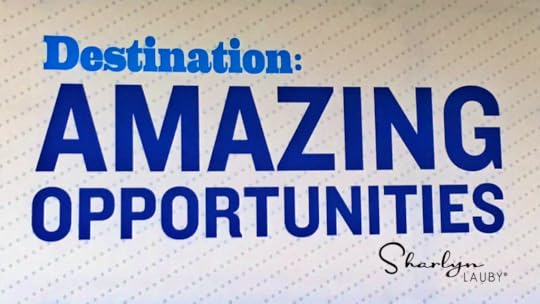
Unemployment numbers are low and organizations are regularly
expressing frustration when it comes to finding candidates. But make no
mistake, that doesn’t mean every job seeker is having an easy time finding their
next opportunity.
Conducting a job search is hard work. And it’s time consuming.
The goal for a job seeker isn’t simply to find a job. It’s to get multiple
offers. If you’re currently looking for a new opportunity or considering a
change in 2020, you might want to get some career advice from professionals.
Global outplacement consultancy and executive coaching firm Challenger, Gray & Christmas will be providing FREE career advice to callers on Thursday, December 26, 2019 and Friday, December 27, 2019. This is the 34th consecutive year that the firm has suspended their normal business operations to provide job search expertise to the general public. The number to call is 312.422.5010 (9a – 5p Central). The Challenger Career Help Hotline will answer questions about military to civilian job searches, job search for individuals age 55+, resume writing, interviewing tips, switching industries, finding a job after incarceration, and much more.
In addition to the resources that the Challenger Career Help
Hotline can provide, I hope you find these HR Bartender articles helpful.
Job
Seekers: The Goal Is to Get Multiple Job Offers
Did you know that your goal should be multiple job offers?
You should not count on one job or one company. It may not work out.
12
Things that Recruiters are Looking for Right Now
Recruiters share their list of things that job seekers do
well, need to do better, and should start doing now. No more guesswork! This
list is developed by full-time professional recruiters.
Use
Games to Find Your Next Job
Now you can use games to find your next job. Criteria Corp
and partner ZipRecruiter have a new app called JobFlare. Six games help match
you with a job.
Job
Seekers Need Paper and Tech Skills
Candidates today can’t just be fluent in either technology
or paper. They need to do well with both. Because that’s what they need on the
job.
There
Is a Fine Line Between Persistent and Pest
Job candidates need to understand the fine line between
being persistent and being a pest. Learn how to follow up the right way in a
job search.
Keep
Your Contact Info Current and Answer Your Phone
Job seekers want to be found by recruiters and rise above
the competition. That means keeping contact info current and connecting with
recruiters. Because recruiters are telling us that’s a problem.
Regardless of what’s happening in the labor market, finding a new job is tough. Take advantage of the resources available to you. Ask good questions and use that information to create a job search strategy that will help you succeed.
Image captured by Sharlyn Lauby while exploring the streets of Chicago, IL
The post Bookmark This! Job Seeker Resources Edition appeared first on hr bartender.






November 25, 2019
We Need STEM and We Need MESH

I ran across an article recently on Medium
titled “Forget
STEM, We Need MESH”. It’s a thought provoking read. The
author spends a fair amount of time kinda bashing the renewed emphasis on STEM
education (science, technology, engineering, and math). His point is that all
the talk about STEM is at the expense of MESH education (media literacy,
ethics, sociology, and history).
I had never heard the MESH acronym before. I
like it. We’ve talked before on HR Bartender about the
importance of being media literate. And I’d like to
think that we don’t need to have a lot of discussion about the importance of
ethics. What we haven’t spent a lot of time discussing is sociology and
history.
Sociology is focused on understanding people
and groups. I did a quick internet search and found dozens of articles talking
about how sociology
can bring value to business through the understanding of people.
Same with history. I discovered several articles that make the connection
between history – problem solving – business. Totally makes sense. We can use
history to understand and solve future business challenges.
I do agree with the author that MESH is
important. But I don’t think we have to choose between MESH and STEM.
Businesses need both. Society needs both. I think what we do need is to stop
saying one is more important than the other. Oh sure, there will be times when
we say to ourselves that we need someone with math skills. Or another moment
when we say that we need someone with media literacy knowledge. But that
doesn’t mean one set of skills is superior to another.
In fact, I could see MESH and STEM working
together as a way for organizations to address competency development. Every
employee needs to have some level of competency in these areas:
Communications
(to include media literacy)EthicsRelationship
Building (including inclusion, collaboration, and team development from
sociology)Problem
Solving (and critical thinking from history)Research
(taking the form of curiosity and the ability to hypothesize from science)Technology
(in terms of hardware, software, AI and VR)Process
and Change Management (related to engineering)Metrics,
Data, and Analytics (mathematics)
In looking at the list above, I think it can
become a great starting point for employee development. Organizations can make
sure they’re offering training and learning in these areas. Employees could use
STEM and MESH as part of their career
development plans. Maybe employees set a goal to
develop one MESH competency and one STEM competency each year.
The most important takeaway is the employees
are learning. And hopefully, they’re learning more than one thing. Even if an
employee starts learning a subject and decides they don’t like it very much,
they know something about it. And they know when they need to seek out that
complementary point of view.
Let’s not debate about whether STEM or MESH is more important. We should declare it a tie. The focus needs to be on learning. And encouraging employees to be curious about learning in areas they aren’t currently being exposed to on a daily basis.
Image captured by Sharlyn Lauby at the National Atomic Testing Museum in Las Vegas, NV
The post We Need STEM and We Need MESH appeared first on hr bartender.






November 21, 2019
Recruiting Source Effectiveness: Focus on Quality Over Quantity
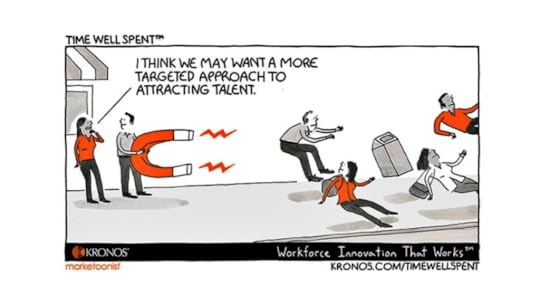
(Editor’s Note: Today’s article is brought to you
by
our friends at Kronos
,
a leading provider of workforce management and human capital management cloud
solutions. It’s not too late to sign up for
Kronos’
Fall eSymposium for HR and Payroll professionals
. You can listen to
the session recordings, get recertification credits, and receive a FREE copy of
the new Workforce Institute book “Being Present”. Enjoy the read!)
We know that organizations are looking for new and creative
ways to recruit. Unemployment remains low. Many industries are facing skills
gaps. And Boomers are planning their exit strategy from the workforce.
Today’s Time
Well Spent from our friends at Kronos
reminded me though that when it comes to recruiting, we need to think about
quality over quantity. It’s great to have a lot of applicants, but if they’re
not qualified…well, does it matter?
Track recruiting source effectiveness. HR departments should know what sources bring them the most qualified applicant flow. It’s equally important to know where top candidates come from and the sources that yield the most job offers. The good news is that today’s recruiting technology solutions can do this for you.
Discuss recruiting source effectiveness during meetings. I’m specifically referring to the recruiting strategy meeting (aka the intake meeting). HR should let hiring managers know what sources have been effective lately and ask for new source ideas. I’ve worked with many hiring managers who spent time cultivating their own sources.
Dedicate resources toward testing new sources. Speaking of cultivating sources, organizations should put some dollars in the budget for HR to test drive new sources. The last thing anyone wants is to be trying a source for the first time when the stakes are high and there’s no room for mediocre results.
I know sometimes sourcing can feel like throwing spaghetti at the wall and hoping something sticks. But it doesn’t have to be that way. HR departments should find time to identify and test out new sources. Then track their performance so when managers have openings, the company can “pull in” the right talent.
The post Recruiting Source Effectiveness: Focus on Quality Over Quantity appeared first on hr bartender.






Sharlyn J. Lauby's Blog
- Sharlyn J. Lauby's profile
- 10 followers



